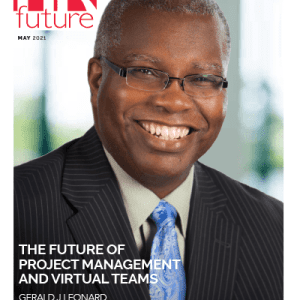Business leaders, entrepreneurs, startups, and Fintech gurus are all facing the reality that their enterprises need to understand and effectively respond to disruption, uncertainty, and rapid technological advancement if they are to avoid obsolescence. But too many don’t have a strategy for innovation and instead go for a try-it-all approach which is counter-productive.
We all know that the world of work and business is changing and transforming rapidly, even exponentially.
At most international conferences during the past year, it was inevitable for some form of a Moore’s Law graph to make its appearance, supporting the certainty that the world is on the cusp of another massive shift.
Yet while every business leader knows this, not everyone knows what to do about it, and this uncertainty can give rise to ineffectual and even counter-productive responses.
On an intellectual level, business leaders and entrepreneurs know that they must act, as treading water is not an option. On a practical level, however, many, if not most businesses, simply don’t know where to grasp and where to let go. The question then is: How does one identify the as-yet-unknown opportunities that will inevitably emerge with the shifting tides, and what does one do to protect against the impact of technological disruption?
A recent viral article by renowned entrepreneur Hiten Shah, My Billion Dollar Mistake, gave an honest yet chilling first-hand account of how frenetically chasing new ideas may jeopardize – even fatally – what you have already built.
The takeaway, however, is not that you should go back to basics and focus solely on your company’s core business. Conscious and pro-active strategic effort must be applied to ensure that you diversify and stay ahead. But then how can leaders strike the balance between consolidation and innovation?
The answer is 10%. A 10% focused investment of your time, money and human resources to explore those areas you know you don’t know yet.
In his frank telling of the circumstances that led to his Billion Dollar Mistake, Shah details the syndrome that many entrepreneurs experience but rarely diagnose – the daily scramble of chasing too many ideas, chaotically, without clarity of strategy, direction or purpose.
Entrepreneurs are typically ideas people, and they love the next new shiny thing. Unchecked and unfiltered, if we are let loose on our teams driving them each day to try out something new, work becomes an absolute mess and our core business and company equilibrium suffer.
Contrast this with an approach that says: a strategic priority is to allocate 10% of our time, resources and energy into new things, and part of our ethos is to have a ‘beta testing’ mindset. This means that we continue to focus 90% of our energy into our core business. The people who are focused on core business, continue to focus on that. But crucially for our survival, we also have 10% worth of innovation going on, on the side.
So for those startups, entrepreneurs, Fintech gurus and their ilk who have established themselves and need to know where to next, the answer lies in diagnosing where you are at, and where you need to go.
This can be achieved by asking (and addressing where necessary) the following:
- Does the scenario described by Shah hit a bit too close to home?
- Are you also guilty of tossing new ideas out to your team, causing havoc and chaos, and having people spend most of their time futilely working on new ideas that never go anywhere?
- Are you still clear about your core focus or your core product based on sufficient market research and customer feedback?
- Are you spending enough time on that to drive it forward with focused intent?
- Are you aware of what the biggest threats of disruption are that could make your business obsolete?
- Are you taking any measures to strategically (not haphazardly) identify opportunities, or mitigate the threats of this?
- Are all of your resources (time, energy, money, people) working only on that one thing (core business product or service), or are you allocating an appropriate amount of resources (10%) to testing out new products or services?
Entrepreneurs and business leaders who are anxious about tomorrow, never mind the distant future, will benefit immensely by taking their heads out of the weeds by attending conferences and summits, joining conversations and webinars, and any high-quality learning events they can get access to.
Then, they need to realise that they can’t just be observers in the innovation space. They need to come back to the office and actively investigate and try new things, in a structured and dedicated manner, if they are to stay ahead without tripping up.
Debbie Goodman-Bhyat is the leadership strategist and founder of Jack Hammer.


























